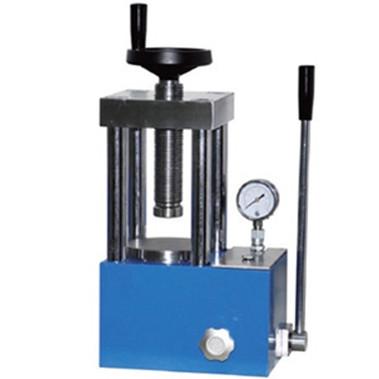An XRF (X-ray Fluorescence) hydraulic press is specifically designed for preparing samples in a way that they are suitable for analysis using X-ray fluorescence spectroscopy. This type of preparation is essential for achieving accurate and reliable results when analyzing the elemental composition of materials. The primary purpose of an XRF hydraulic press is to create uniform pellets or discs from powdered samples, which can then be easily analyzed by an XRF spectrometer.
Key Features of an XRF Hydraulic Press
1. Force Capacity
- Typically, these presses have a force capacity ranging from 15 to 40 tons, sufficient for compressing various types of materials into dense, homogenous pellets.
- The exact force needed depends on the material's properties, such as hardness and particle size.
2. Precision Control
- Offers precise control over the pressure applied during the pellet formation process to ensure consistency and quality of the sample.
- Some models come with programmable controllers allowing users to set specific pressing parameters like pressure level, hold time, and release rate.
3. Die Sets
- Comes with specialized die sets designed for XRF sample preparation. These dies are usually made from high-quality steel or other durable materials resistant to deformation under high pressure.
- Available in different sizes to accommodate varying sample volumes and desired pellet diameters.
4. Safety Features
- Equipped with safety mechanisms such as emergency stop buttons, interlocks, and protective guarding to prevent accidents.
- Pressure relief valves protect against overloading, ensuring both operator safety and equipment longevity.
5. Ease of Use
- Designed for ease of operation with intuitive controls and straightforward setup procedures.
- Quick-release mechanisms allow for easy removal of the prepared sample after pressing.
6. Optional Accessories
- Heated platens may be available for processes requiring temperature control, aiding in the binding of certain materials.
- Sample preparation accessories like spacer rings, backing plates, and films are often used to improve the quality of the pressed pellet.
Lab Hydraulic Press
Applications in XRF Sample Preparation
- Powder Compaction: Compresses powdered samples into solid pellets, eliminating air gaps and inconsistencies that could affect XRF analysis results.
- Homogenization: Ensures that the sample is uniformly distributed within the pellet, leading to more accurate elemental analysis.
- Enhanced Analysis Accuracy: By creating a smooth, flat surface, the XRF spectrometer can more accurately measure the elemental composition without interference from uneven surfaces or trapped air bubbles.
Benefits
- Improved Data Quality: Properly prepared samples lead to higher quality data, enabling more precise and reliable elemental analysis.
- Efficiency: Streamlines the sample preparation process, saving time and effort compared to manual methods.
- Versatility: Suitable for a wide range of materials including soils, ores, ceramics, metals, and polymers.
Using an XRF hydraulic press ensures that your samples are optimally prepared for XRF analysis, which is critical for obtaining accurate and repeatable results. Whether you're working in environmental science, geology, metallurgy, or any field requiring detailed elemental analysis, an XRF hydraulic press can significantly enhance your analytical capabilities.

